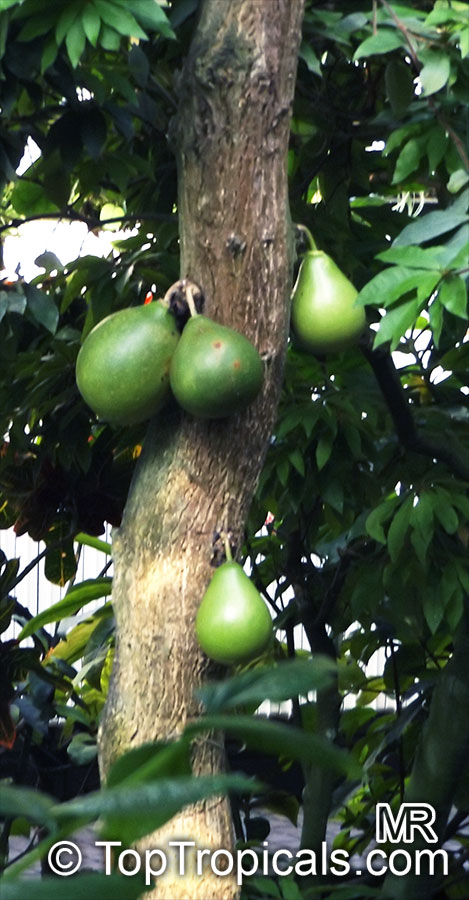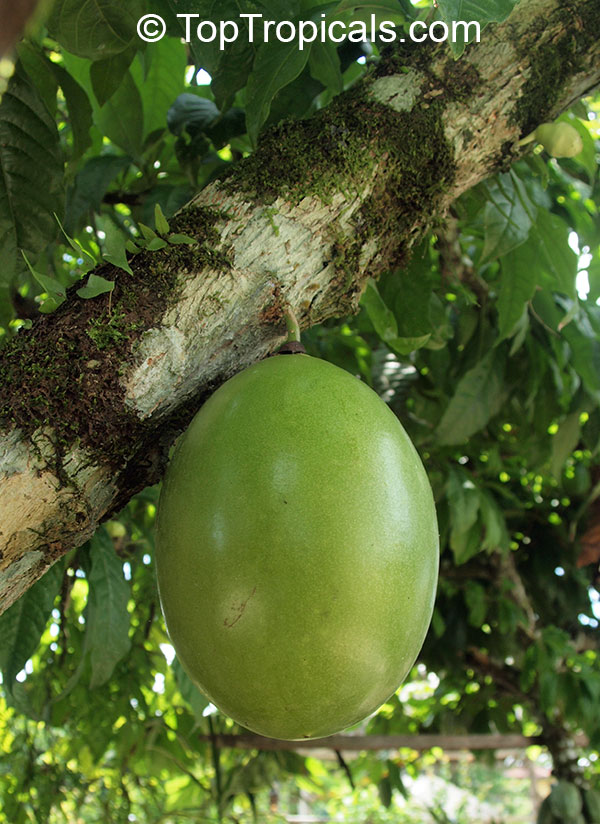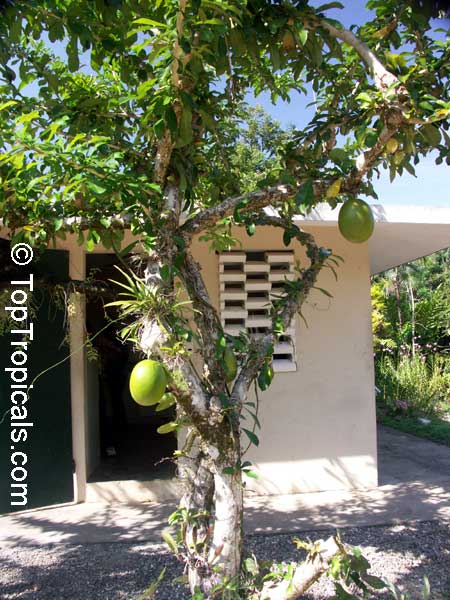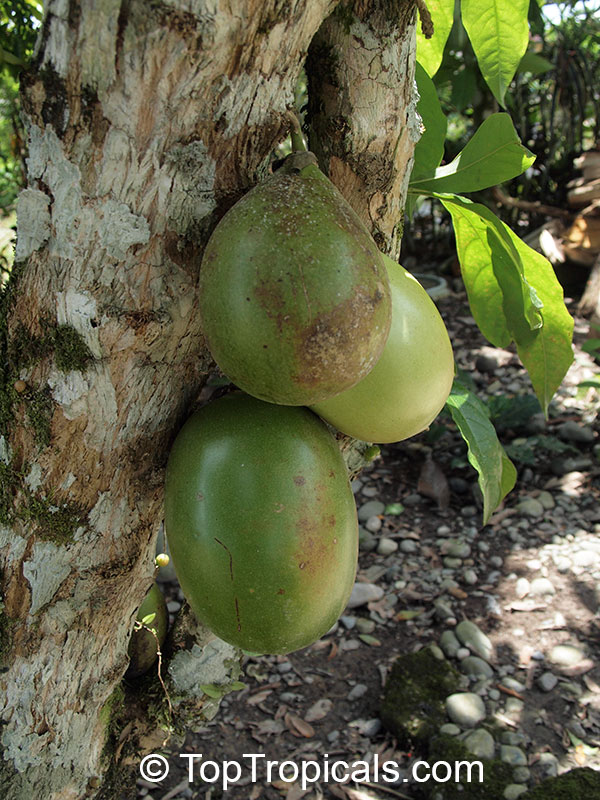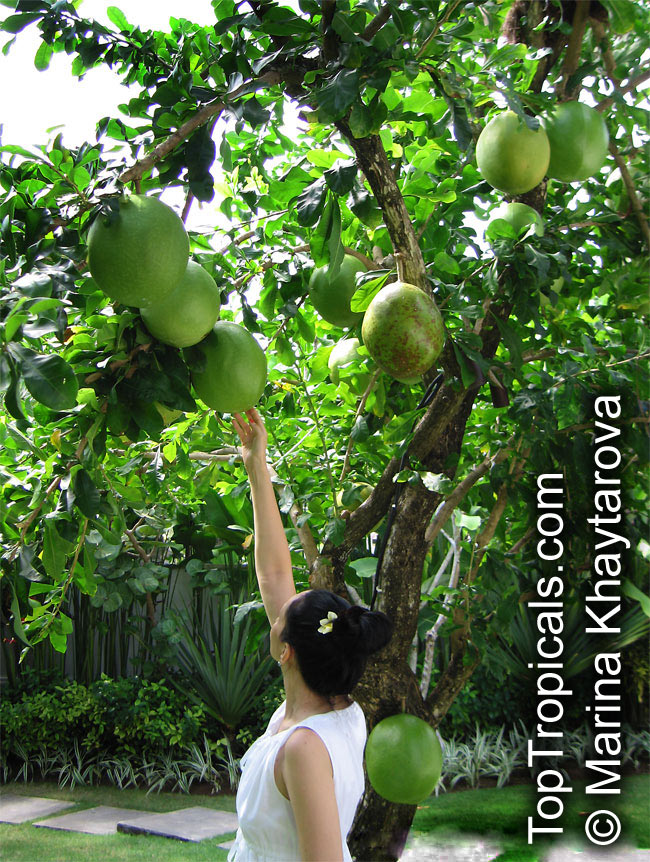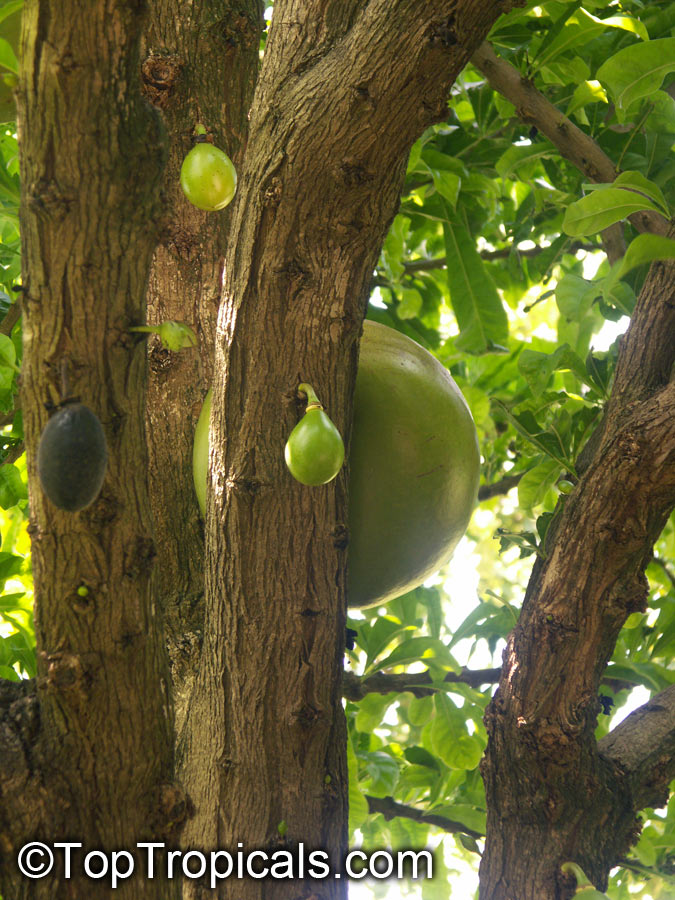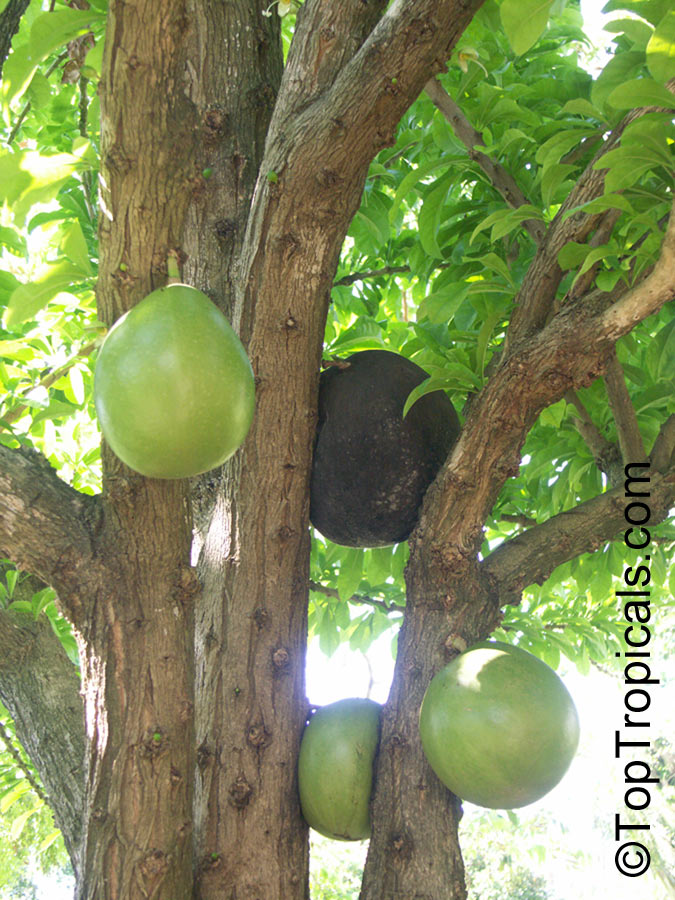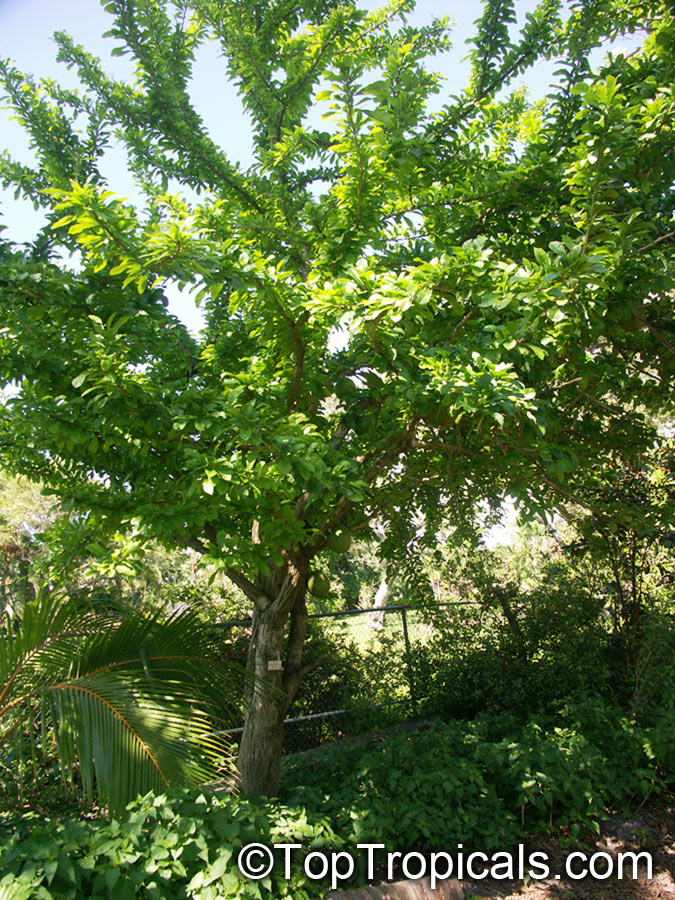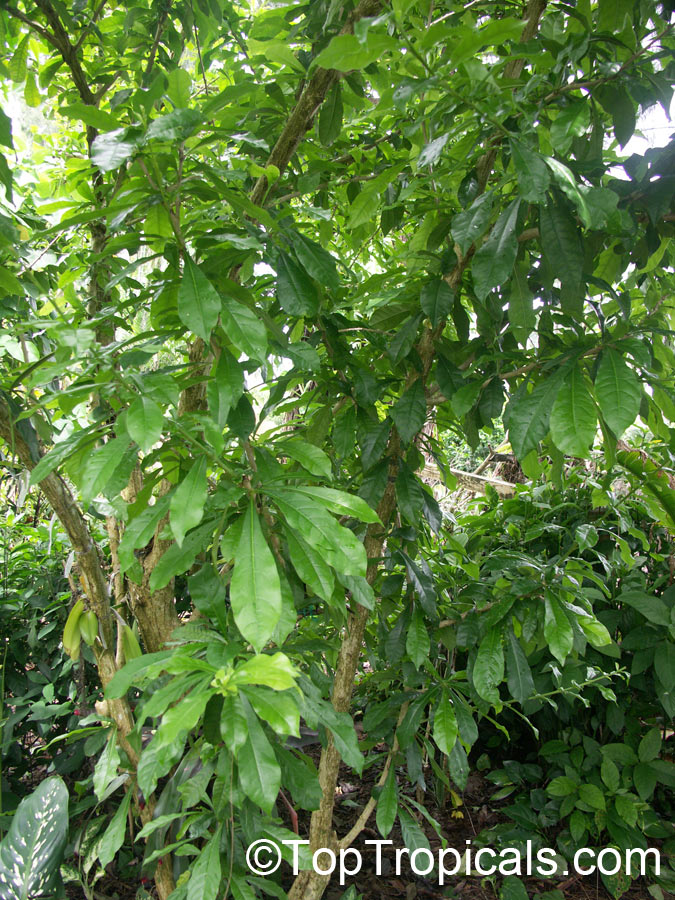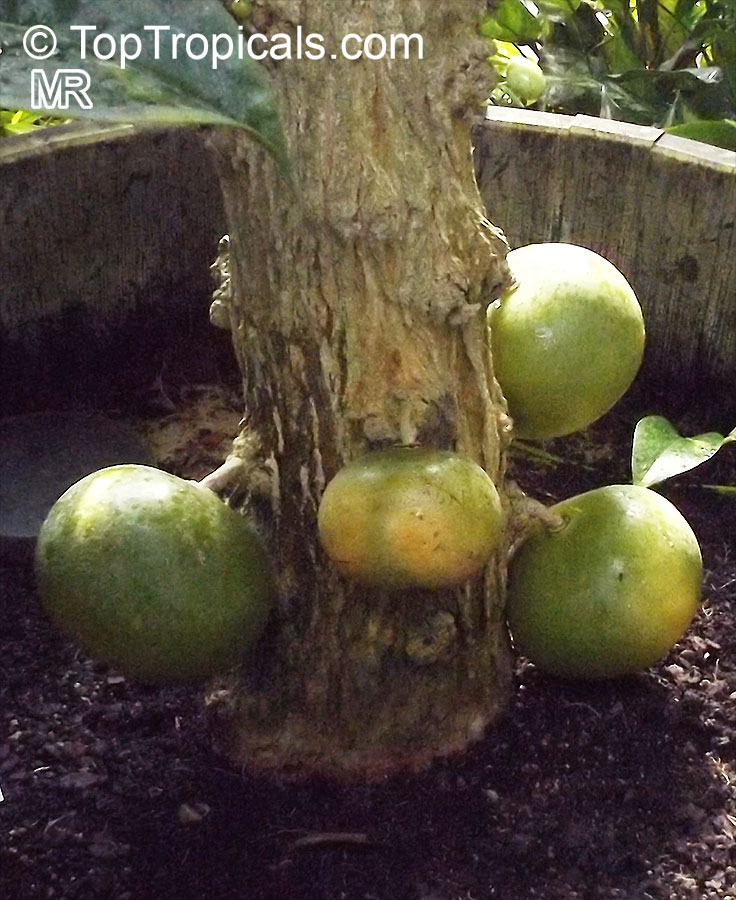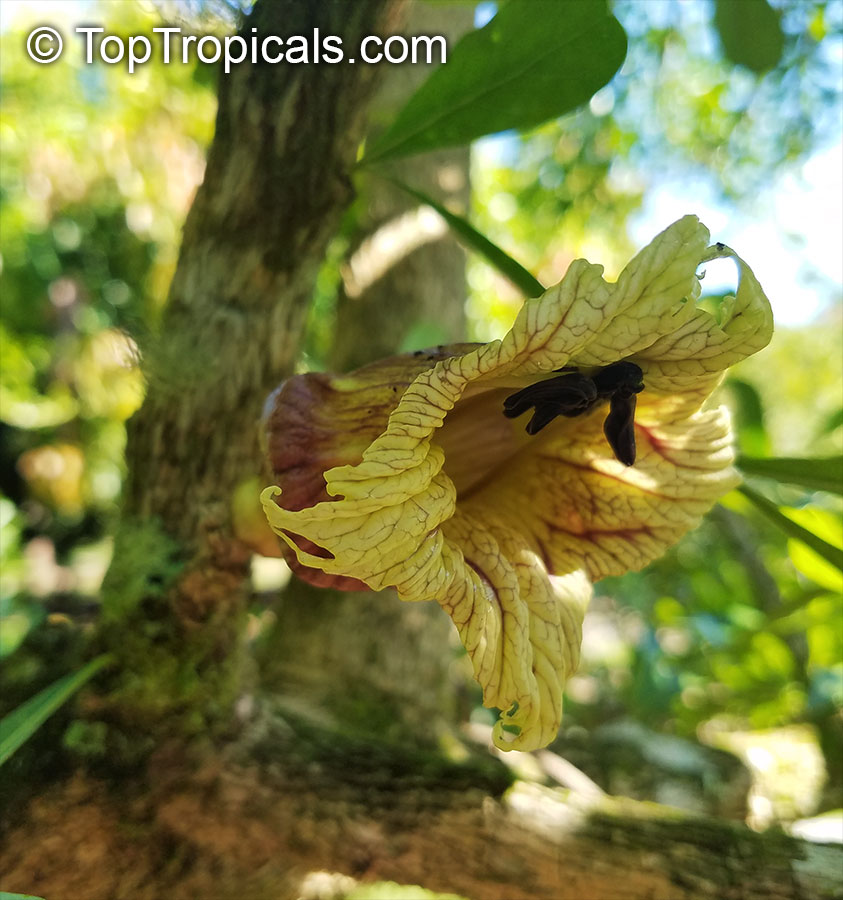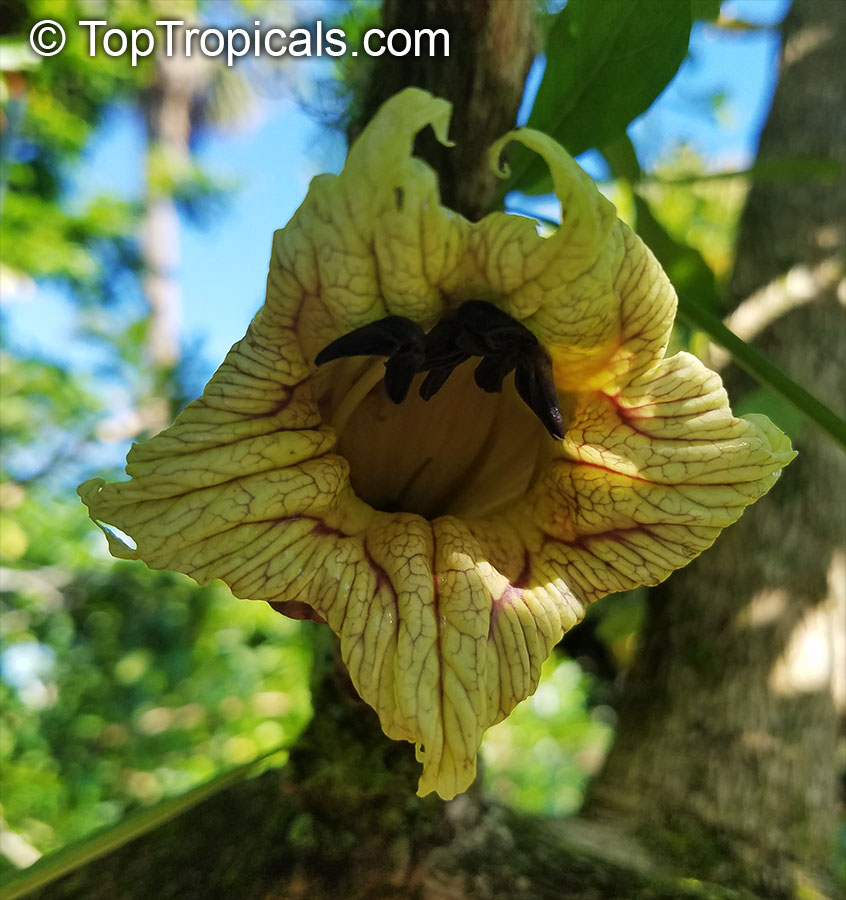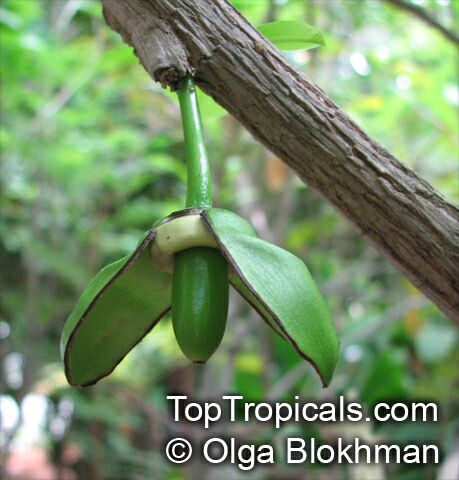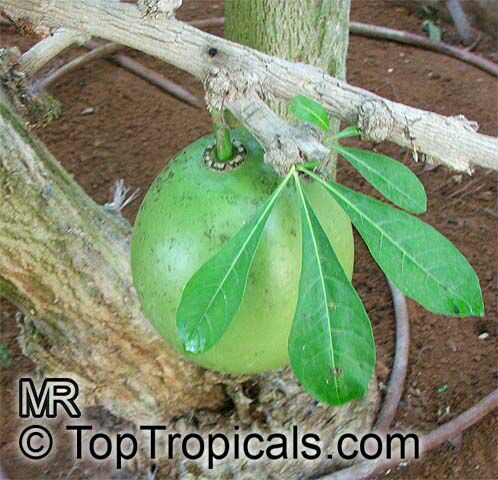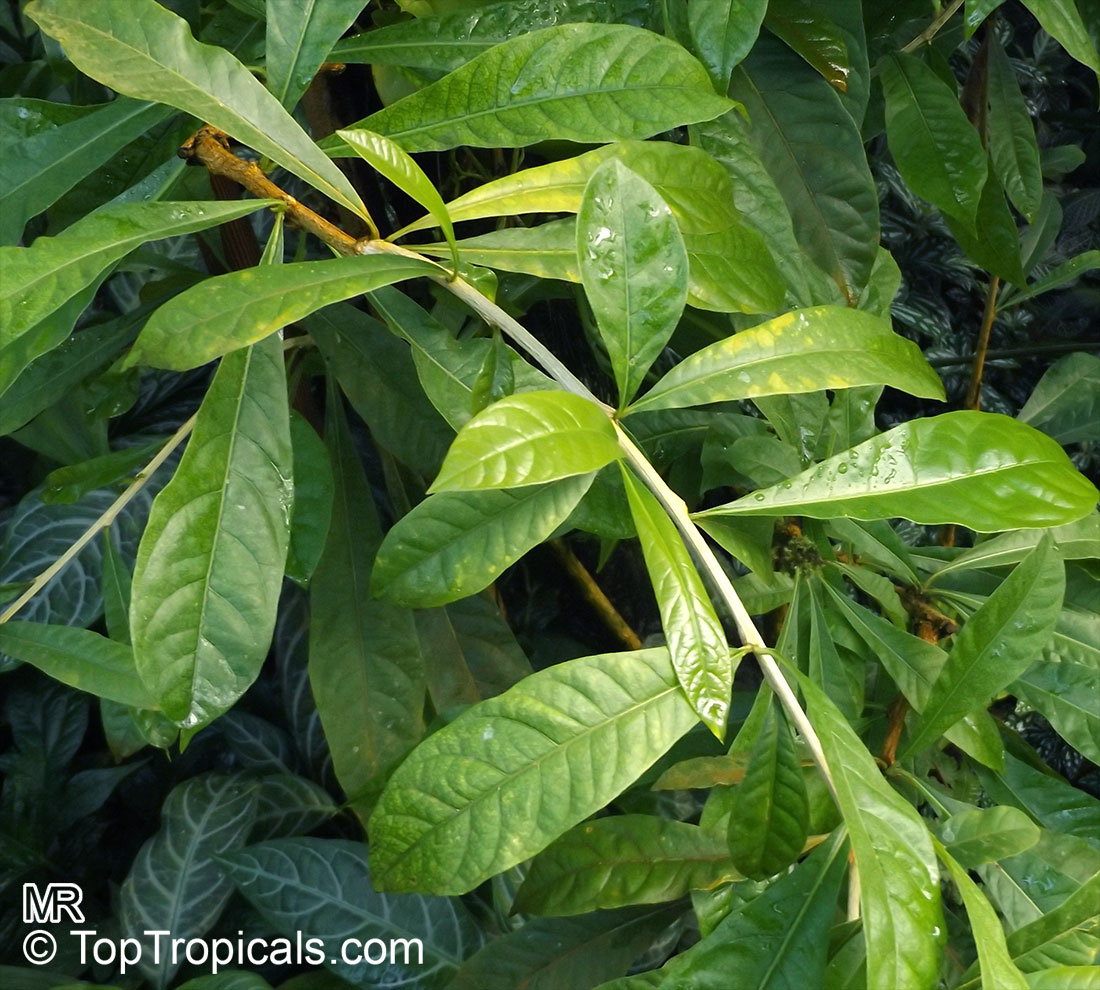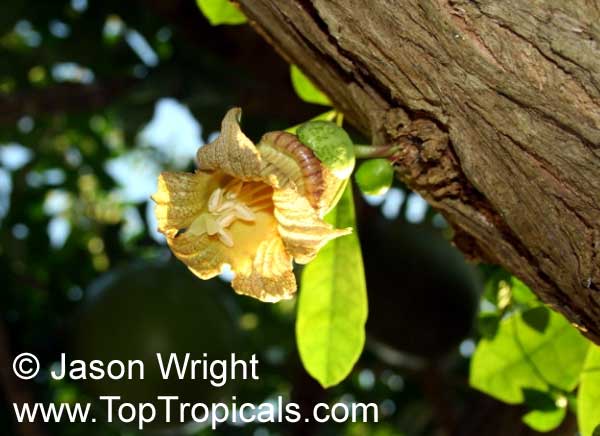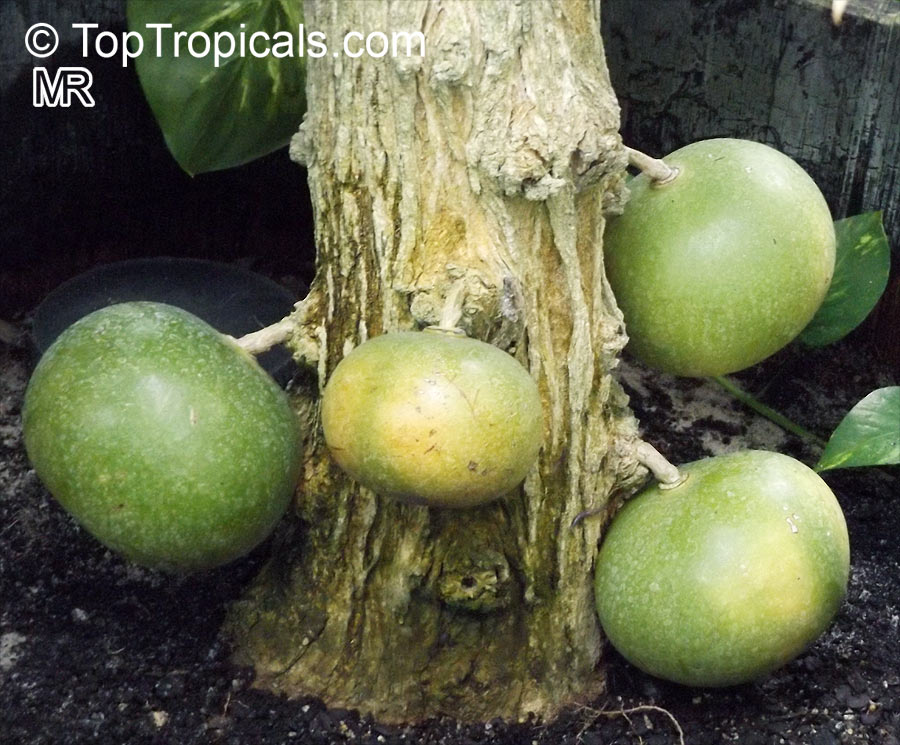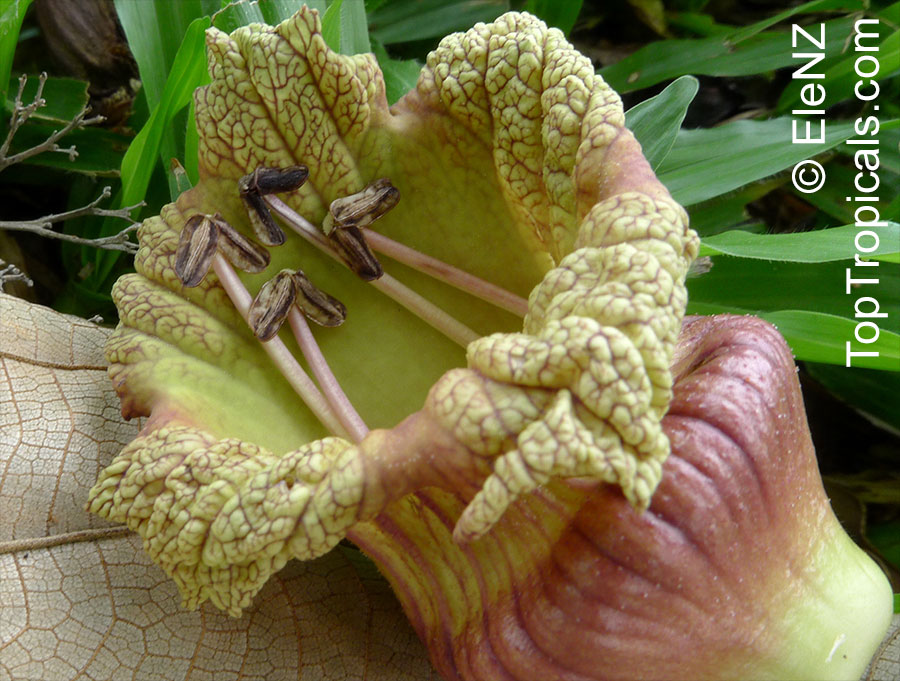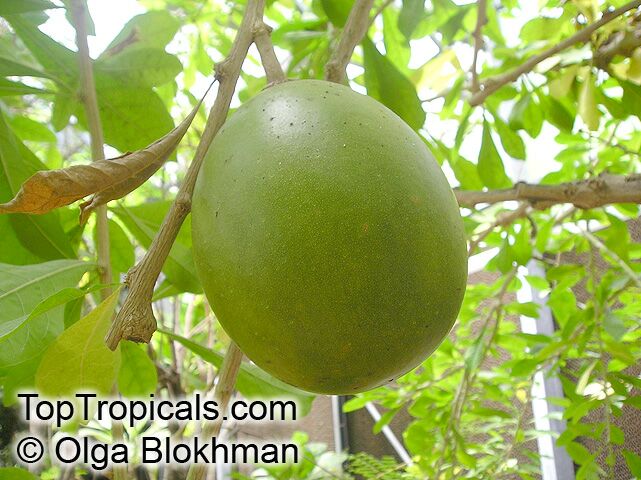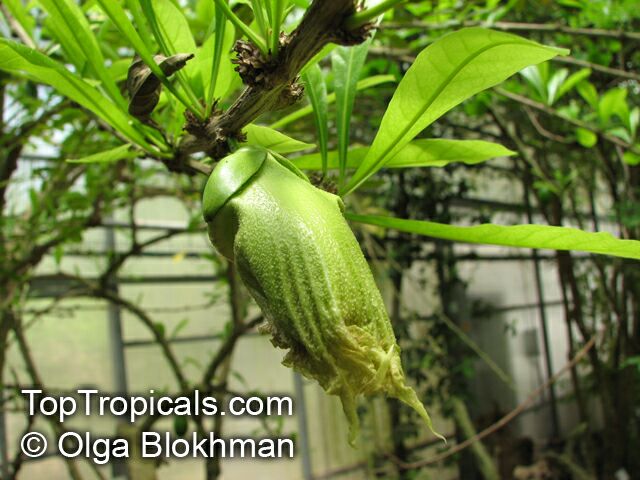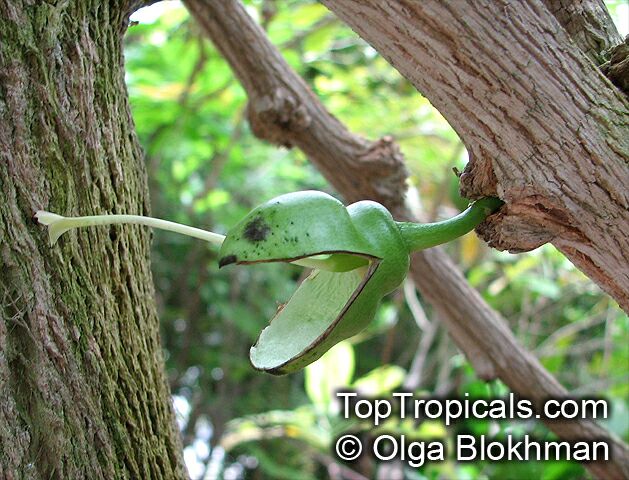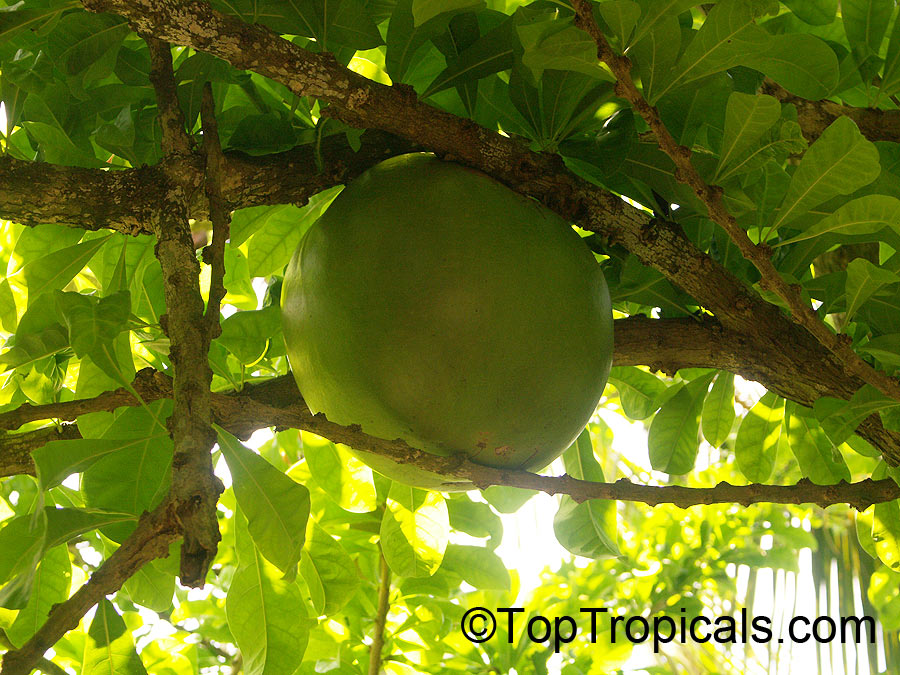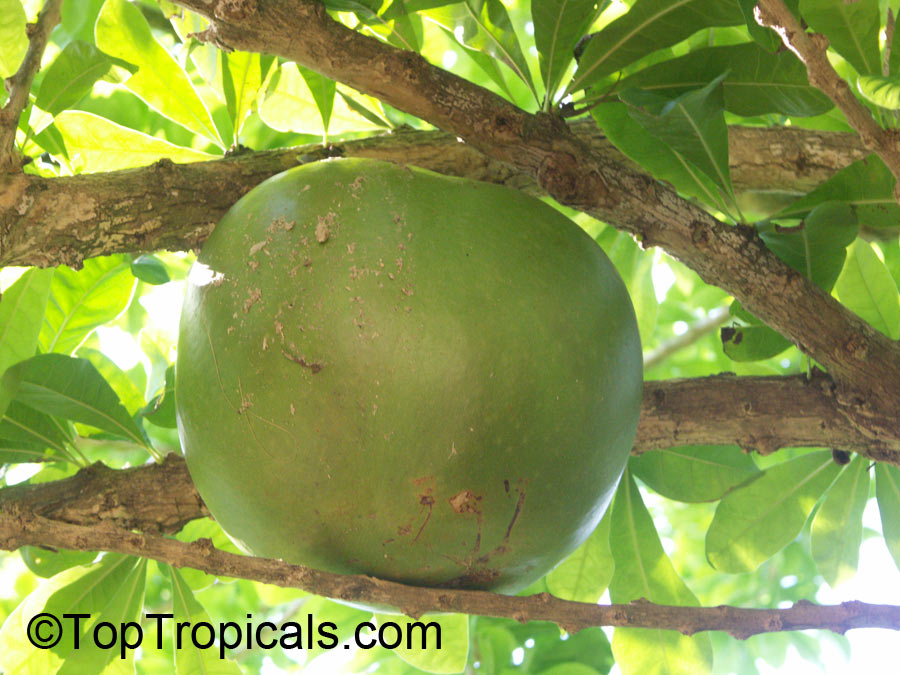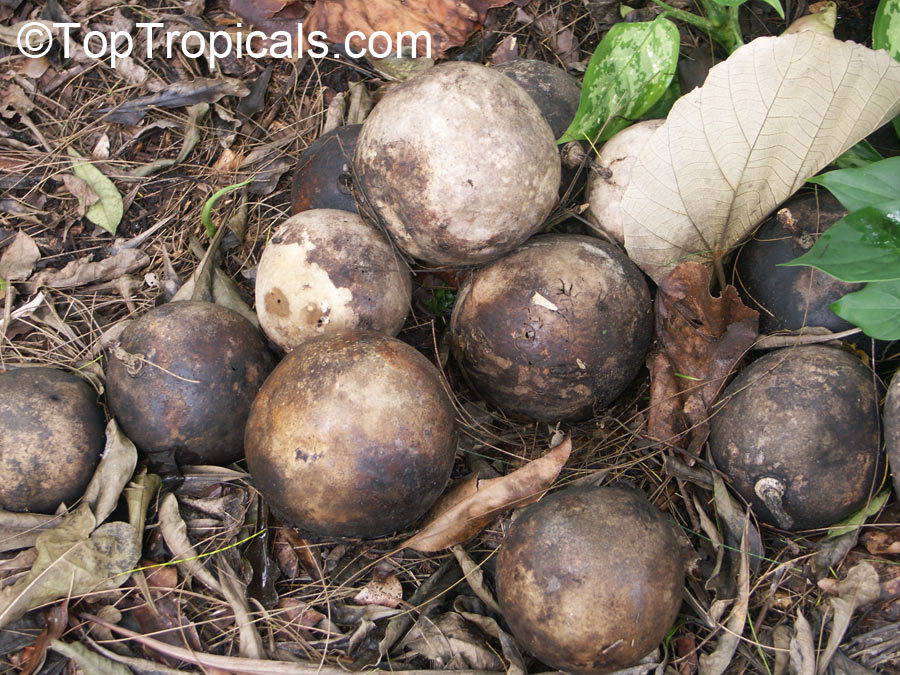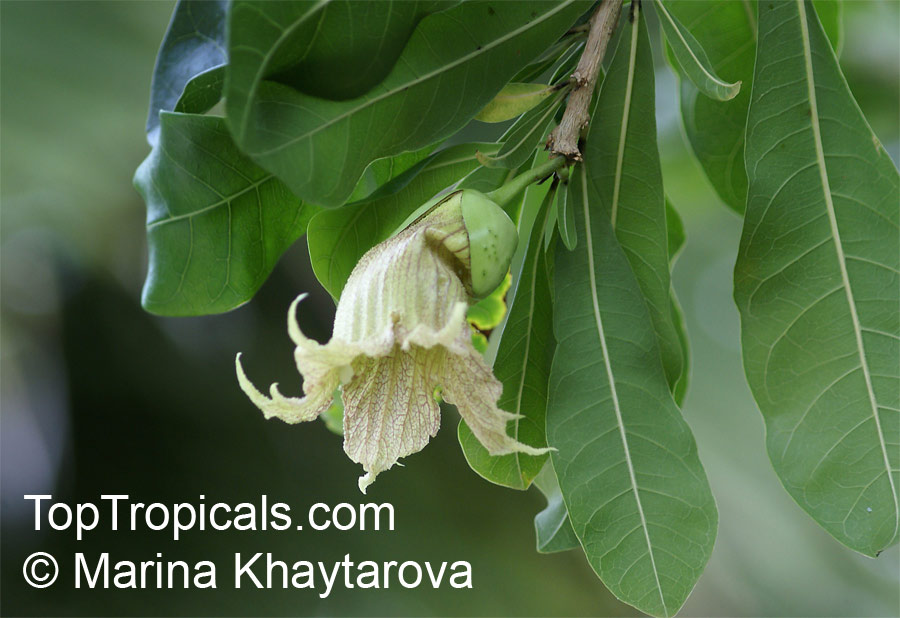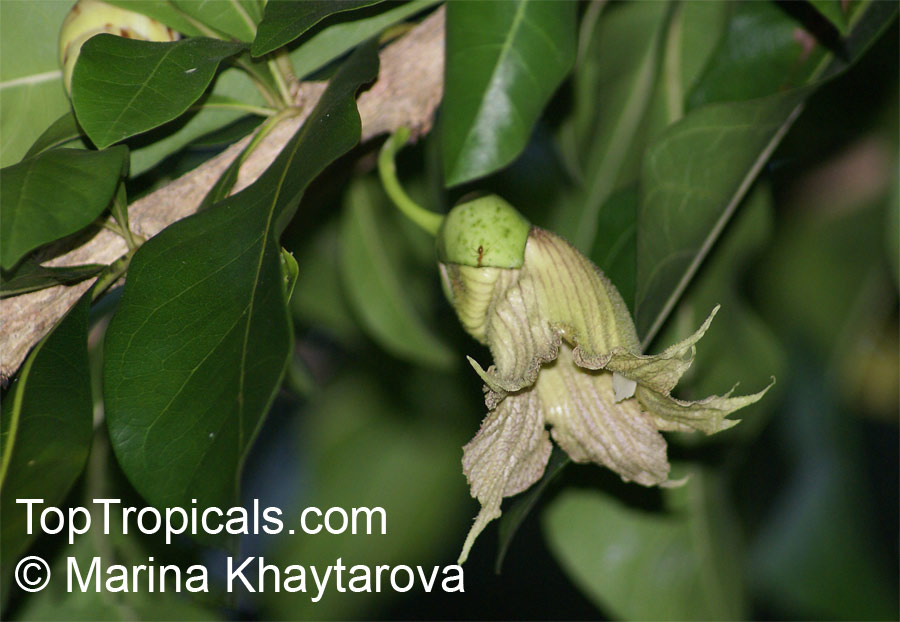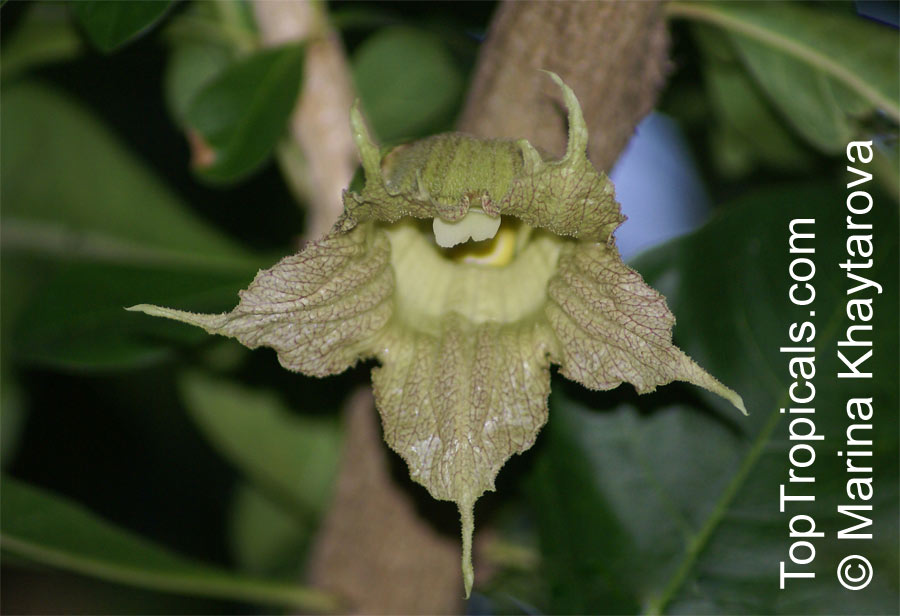Crescentia cujete (Calabash Tree)
Top Tropicals Plant Encyclopedia
Botanical name: Crescentia cujete
Common names: Calabash Tree, Krabasi, Kalebas, Huingo
Family: Bignoniaceae
Origin: Mexico to Brazil including the Antilles








The Calabash Tree (Crescentia cujete) is a unique plant known for its yellow to orange flowers, dark green foliage, and distinctive growth habit. It is a fast-growing, evergreen tropical tree that can reach up to 25 feet tall. This plant is well-suited for USDA Zone 9-11 and can be grown in pots in colder regions. It is widely used as an ornamental in the tropics and is also wind-resistant, making it a good choice for coastal planting in seaside areas.
This plant requires full sun or partial shade and moderate watering, especially during hot seasons. Its hardy character and ethnomedical uses make it an excellent choice for gardeners looking to bring the beauty of the tropics to their own gardens.
One of the most recognizable features of the Calabash Tree is the large, round green fruit that grows directly on its branches. The tree has rough bark and simple leaves, and its flowers appear directly from nodes on the trunk and branches. It blooms at night and its fruit develops from the main trunk and limbs after pollination by bats. The fruit can reach up to 14 inches in diameter and has a hard green shell with a pulpy interior.
The pulp of the Calabash fruit has medicinal uses, including traditional treatments for respiratory problems in Suriname. The fruit also contains hydrocyanic acid, making it a purgative. The hard shells of the fruit are often used as containers for food or water, and the tree is also commonly used in Tropical American folk medicine. The Calabash Tree has some salt tolerance but cannot tolerate frost.
In addition to its ornamental qualities, the Calabash Tree is also an excellent host for epiphytes like bromeliads and orchids. With its unique appearance, versatility, and tolerance for a range of growing conditions, the Calabash Tree makes an interesting and valuable addition to any garden.
